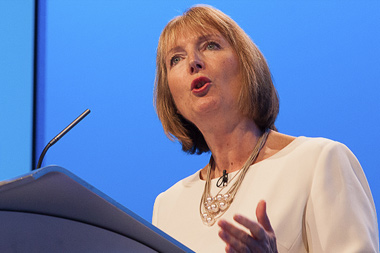Pink and prejudice: is Labour's battle bus really off colour?

It may have stirred controversy – but studies suggest that the rosy hue of Harriet Harman’s vehicle for picking up female votes is smarter than its critics think
Jon Bennett
I’ve written before about political parties attempting to isolate parts of the electorate who have particular policy concerns. Careful targeting – underpinned by the data and techniques of social media – allows a party to target simple, hard-hitting messages to particular segments of the population. Harriet Harman’s launch of a campaign that specifically targets women is in some ways an example, though it is based around that tried-and-tested mechanism of a battle bus that will pull up outside school gates, shopping centres and workplaces. The initiative has stirred up plenty of controversy. Not because of the issues to be addressed or the model of engagement… but because the bus has been painted pink.
For many commentators and pressure groups, the choice of colour is patronising and irritating. The issue of gender stereotyping through colour is one on which a number of campaigns have focused. How are young women to be encouraged into science and engineering if society demands they drive pink diggers? I’ve a lot of sympathy with this thinking. I’d like my daughter to have every opportunity to follow a path she chooses. If by happy coincidence that also means I trip over less pink plastic in the hall then I’ll sign up twice. But at the risk of being stereotyped as a gender stereotyper, there’s a reason the toy manufacturers do it: it helps them sell more toys.
In a study entitled Impact of Colour in Marketing, researchers found that up to 90% of snap judgments that consumers make about products can be based on colour alone. Some studies have backed up a correlation between gender and colour preferences, and while that seems most likely to be linked to prevailing social norms rather than any inherent genetic bias, it is powerful nonetheless. Even as we may reject the suggestion that colours should be associated with particular genders, subconsciously we are socialised by marketing and fashion to make decisions on exactly that basis. Colour appropriateness plays a part in our decision making: do I expect garden tools to be green or pink? And the power of fashion to condition our decisions is evidenced by the fact that pink for girls and blue for boys only became convention after World War II. The exact reverse was true as little as 20 years before. There’s an interesting doctoral thesis on the issue here.
What does all this mean? You can make a pragmatic argument to paint the bus “pink for women”, in line with unconscious social expectations. But by underestimating the powerful backlash of pressure groups and commentators, any possible advantage has been more than lost.
Sadly, the colour of the bus is likely to be the defining feature of this campaign, despite the wider social questions. For example, it would be rather depressing if issues of childcare, family care, equal pay and tackling domestic violence are things of interest only to a female audience. Aren’t they issues on which men should also be expected to take a view? And one minibus to reach the 9.1 million women who didn’t vote in 2010 is going to be tough going. Is this really the limit of Westminster’s investment in engaging half the UK population?
However, Harman has gone on the record with an important message for women: “Use your vote, use your voice because politics is too important to be left to only men voting.” The bus may well have got off to a stuttering start – but I hope the initiative isn’t forced off the road by its colour.
Jon Bennett is managing director of corporate communications consultancy Linstock Communications.
For more thoughts on management styles that will open up female opportunities, sign up to this forthcoming CMI seminar.
Image of Harriet Harman courtesy of her website.

Press & Media Enquiries
For more information or to request interviews, contact CMI's Press Team on 020 7421 2705 or email press.office@managers.org.uk


